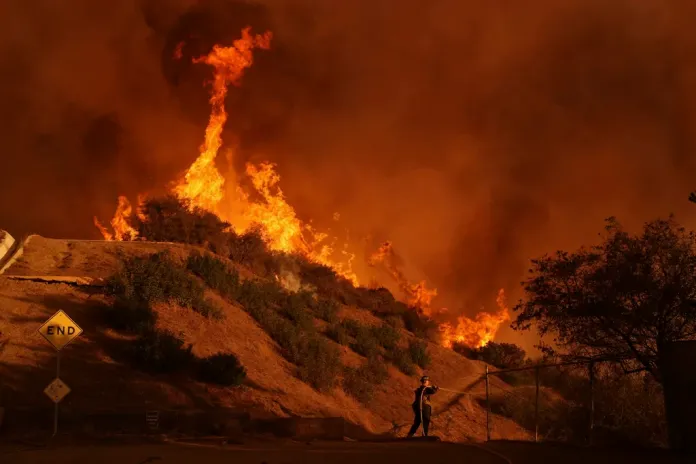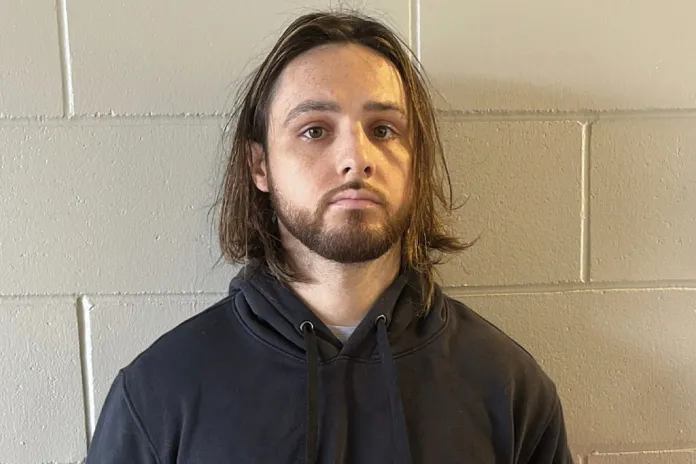


Calls are mounting for investigations into failures in reignition management and other aspects of the firefighting response to the deadly 2025 Palisades Fire in California. The scrutiny comes after the arrest of a man accused of setting a smaller blaze six days earlier that authorities say sparked the larger inferno.
Jonathan Rinderknecht was arrested this week, accused of intentionally sparking one of the most destructive fires in California history. The 29-year-old Uber driver, the son of missionaries, has been accused of “maliciously” setting the fire that killed a dozen people. He was arrested Tuesday near his home in Florida on a charge of destruction of property by means of fire, Bill Essayli, acting U.S. Attorney for the Central District of California, said.
Recommended Stories
- Oversight committee contacted Ghislaine Maxwell to testify after Supreme Court defeat
- Antifa leaders flee America as Trump cracks down on domestic terrorist networks
- Police arrest suspect in connection to deadly California Palisades Fire

Authorities claim the Palisades Fire was a “holdover” fire, or a continuation of the Lachman Fire, which Rinderknecht is alleged to have started on New Year’s Day.
Even though Rinderknecht was charged with the crime, fire experts are pointing to mismanagement by firefighting crews and questionable tactics used when putting out the Lachman Fire. Criticism has also been building from some residents over why fire officials didn’t make sure the entire blaze was out before leaving the scene. Questions about their reasons for not pre-deploying trucks to the Palisades area ahead of a strong wind forecast have also started to swirl.
Bureau of Alcohol, Tobacco, Firearms and Explosives Special Agent in Charge Kenny Cooper put all the blame on Rinderknecht.
“L.A. city fire initially responded and put that out, and then that fire burned deep within the ground, in roots and in structure, and remained active for several days. Once the catastrophic winds occurred, fire needs fuel, oxygen, and heat,” he said. “The person who started this fire is solely to blame. I will never blame our brave firefighters when we know how this fire started.”
While the ATF offered a narrative of how the fire department handled the Jan. 1 fire, it was short on details about what the department did or didn’t do to ensure the fire was completely put out. Fires can rekindle days or even weeks after a wildfire has been put out. Most of the time, rekindling takes place while firefighters are still on the scene, and procedures are in place to allow them to control the situation before it gets out of hand.
Cooper said that because the fire burned deep within the ground, it would have been impossible for firefighters to see it.
“No matter how good they are, they can’t see that, right?” he said.

He acknowledged that wildland firefighters commonly patrol for days or weeks to prevent reignitions. When he worked at a state forestry agency, he said, “We would have a lightning strike, and it would hit a tree, and it would burn for days, sometimes weeks, and then ignite into a forest fire. We would go suppress that, and then every day, for weeks on end, we would patrol those areas to make sure they didn’t reignite.”
“If we saw evidence of smoke or heat, then we would provide resources to that,” he said. “I know that’s a common practice, and it’s just, it’s a very difficult fire burning underground.”
Video has surfaced online that seems to show the Lachman Fire still smoldering without a firetruck, hose, or person in sight. That led to allegations that mismanagement might have led to the bigger blaze that destroyed much of the Pacific Palisades, burning almost every structure north of Sunset Boulevard to the ground.
“The arsonist set the first fire, but the fire department proactively has a duty to do certain things,” Ed Nordskog, a former leader of the L.A. County Sheriff’s arson unit and arson profiler, said.
Nordskog told the Washington Examiner that he is demanding “an accounting of what mitigation efforts the fire department took from January 1, 2025 to January 6, 2025 to prevent a flare up from the embers of the Lachman Fire.”
He said he suggested an accounting “within days of the fires as evidence quickly led to that” but that higher-ups in the fire department “vehemently denied” his allegations that they didn’t follow procedure.
“Since then, the acting chief has acknowledged that they did not use all their mitigation tools on Lachman, specifically Thermal Imagers,” Nordskog said.
Nordskog wants to know whether the fire department sent a “fire patrol, hands crew, or dozers” to the Palisades fire, and if not, why. He is also asking for an independent commission that does not have any Los Angeles fire chiefs on it to investigate.
He isn’t alone. Multiple lawsuits have been filed against the state and the electric company over failure to manage and prevent the catastrophic fire.
COMMUNICATION AND TRAINING POLICIES CAUSED DELAYS IN LA FIRE RESPONSE: REPORT
A report is coming out examining the preparedness for the fire and the response to it, Gov. Gavin Newsom (D-CA) said earlier this week. The first phase of the Fire Response Research Institute’s report will be released the week of Oct. 20.
On Wednesday, the Los Angeles Fire Department released its after-action report about the first 36 hours of the response to the Palisades Fire. It claimed the LAFD “balanced fiscal responsibility with proper preparation for predicted weather and fire behavior by following the LAFD pre-deployment matrix,” but that the ferocity of the blaze and conditions overwhelmed the immediately available fire units.
